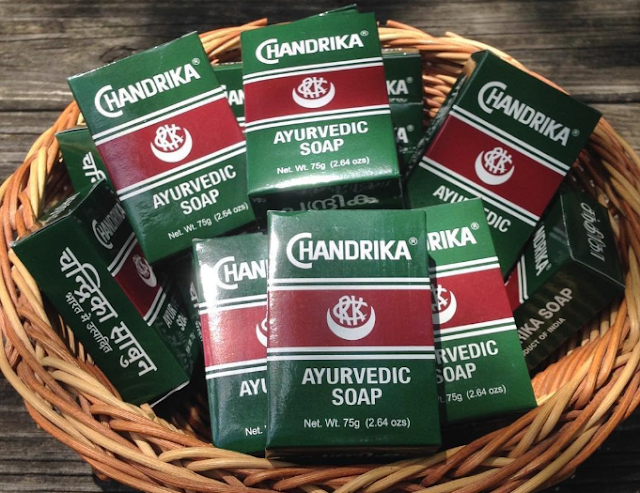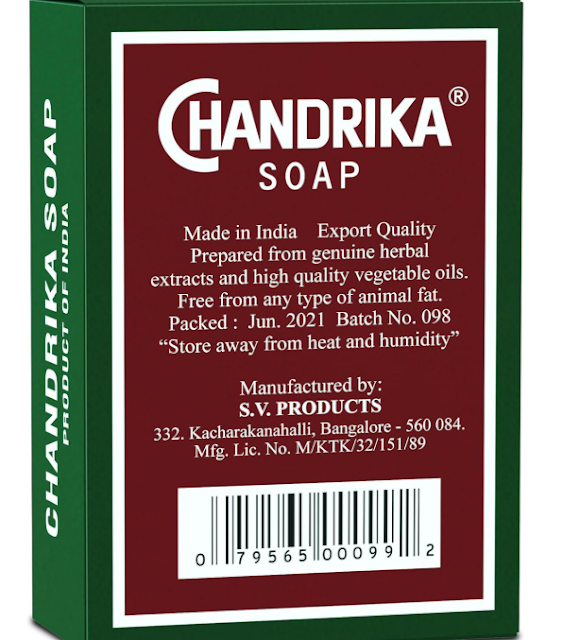In the vast and varied landscape of global skincare, some products achieve almost legendary status, passing down through generations. Chandrika Ayurvedic Soap is undeniably one such icon. Originating from India, this distinctive green bar has garnered a loyal following worldwide, celebrated for its natural ingredients and traditional Ayurvedic formulation. Buy Now in AMAZON
Buy Now in AMAZON
But what truly sets Chandrika apart from countless other soaps? In this deep dive, we'll peel back the layers to reveal its key ingredients, explore its widely acclaimed benefits for skin health, and provide a balanced look at any potential side effects. Whether you're a long-time user or simply curious about this heritage brand, this guide will offer valuable insights.
Unpacking the Essence: Chandrika Soap's Key Ingredients
The philosophy behind Chandrika soap is rooted in Ayurveda, an ancient Indian system of medicine that emphasizes a holistic approach to health and well-being, often utilizing natural herbs and oils.
Here are some of the most commonly cited and beneficial ingredients found in Chandrika soap:
Coconut Oil (Cocos nucifera oil): Often the primary base, Chandrika is known for using a generous amount of coconut oil.
This ingredient is a powerful moisturizer, helping to keep the skin soft and supple. It also possesses natural antioxidant properties that can help slow down skin aging and contribute to a radiant glow. Wild Ginger Oil (Zingiber cassumunar): This contributes to the soap's traditional fragrance and is valued in Ayurveda for its soothing properties.
It's believed to help prevent infections and rashes. Lemon Peel Oil (Citrus aurantifolia) / Orange Oil (Citrus sinensis peel oil): These citrus oils offer a refreshing and cooling effect.
They are known for their astringent qualities, which can help tighten pores and combat pimples and blackheads. They also contribute to the soap's pleasant, natural scent. Sandalwood Oil (Santalum album oil):
A cherished Ayurvedic ingredient, sandalwood oil is renowned for its cooling, refreshing, and gently perfuming qualities. It's also known for its moisturizing properties, helping to hydrate the skin and prevent dryness. It has also been traditionally used for its anti-inflammatory and antiseptic benefits, assisting in treating acne and soothing skin. Patchouli Oil (Pogostemon cablin oil):
With its earthy fragrance, patchouli oil is celebrated for its antifungal, antiseptic, and anti-inflammatory properties. It is believed to promote the growth of new skin cells, aiding in the healing of scars and improving uneven skin tone. It can also help control body odor. Cinnamon Leaf Oil (Cinnamomum zeylanicum leaf oil): This oil can contribute to the soap's warming aroma and has known antimicrobial properties.
Palmarosa Oil (Cymbopogon martini oil): Often used for its moisturizing benefits and pleasant, rose-like scent.
Citronella Oil (Cymbopogon nardus oil): Known for its refreshing scent and some antimicrobial properties.
Kaolin: A natural clay that can help absorb excess oil and impurities from the skin.
It's important to note that Chandrika also contains Sodium Hydroxide (Lye), which is essential for the saponification process (turning oils into soap).
The Promises of Purity: Benefits of Using Chandrika Soap
Users of Chandrika soap often report a range of positive effects, attributing them to its rich blend of natural ingredients:
Clear and Blemish-Free Skin: The combination of antiseptic and antibacterial oils like patchouli, wild ginger, and citrus oils works to combat bacteria that contribute to acne, pimples, and blackheads.
Coconut oil's nourishing properties are also believed to help reduce dark spots and pigmentation. Deep Cleansing and Purification: The soap effectively removes dirt, grime, and excess oil from the skin, leaving it feeling thoroughly cleansed and refreshed.
Ingredients like Kaolin also aid in drawing out impurities. Nourishment and Hydration: Despite its cleansing power, Chandrika is designed to be moisturizing.
The high content of coconut oil, along with sandalwood and palmarosa oils, helps to replenish the skin's natural oils, preventing dryness and leaving it soft and supple. Radiant Glow: Regular use is often associated with a healthier, more radiant complexion.
The nourishing and clarifying properties of the herbal blend contribute to this enhanced glow. Soothes Skin Irritations: Ingredients like wild ginger and sandalwood are traditionally used to soothe minor skin irritations, rashes, and itching due to their anti-inflammatory properties.
Gentle and Natural Fragrance: Unlike many synthetic-perfumed soaps, Chandrika typically leaves a subtle, natural, and often described as "herbal" or "woody" fragrance on the skin, which many find appealing and calming.
Ayurvedic Heritage: For those who prefer products rooted in traditional wellness practices, Chandrika's Ayurvedic formulation adds to its appeal, suggesting a holistic approach to skin health.

Considering the Other Side: Potential Side Effects
While Chandrika soap is generally well-tolerated and often marketed as suitable for all skin types, including sensitive skin, it's prudent to consider potential individual reactions:
Fragrance Sensitivity: Although the fragrance is natural from essential oils, individuals highly sensitive to strong aromas or specific essential oils (like cinnamon, which can be a mild irritant for some) might experience a reaction.
Initial Dryness (Rare): While designed to be moisturizing, some individuals, particularly those with very dry skin, might experience a temporary feeling of tightness or mild dryness, especially during the initial days of use as their skin adjusts. This is usually mild and can be counteracted with a good moisturizer.
Individual Ingredient Sensitivity: As with any product containing a blend of natural extracts, there's always a slight chance of an allergic reaction to a specific herb or oil for certain individuals. Symptoms could include redness, itching, or a rash. A patch test on a small area of skin is always recommended before full-body use, especially if you have known sensitivities.
Eye Irritation: Like most soaps, it should be kept out of the eyes, as it can cause stinging or irritation.
It's worth noting that serious side effects are extremely rare with Chandrika soap, which has been in popular use for many decades. Most users report positive experiences.
The Verdict: A Respected Ayurvedic Choice for Modern Skincare
Chandrika Ayurvedic Soap stands as a testament to the enduring power of traditional formulations. Its carefully selected blend of natural oils and herbal extracts offers a multi-faceted approach to skin care, focusing on deep cleansing, purification, and nourishment.
For those seeking a soap that goes beyond basic hygiene to offer potential benefits for clarity, radiance, and overall skin health, Chandrika presents a compelling option. Its historical roots in Ayurveda, combined with its continued popularity, speak volumes about its effectiveness for many.
However, as with any skincare product, listening to your own skin is paramount. If you have extremely sensitive skin or specific dermatological concerns, a patch test or a quick consultation with a dermatologist can provide personalized guidance. For countless others, Chandrika remains a beloved staple, connecting them to a tradition of natural wellness and the simple pleasure of a truly clean, refreshed, and naturally glowing complexion.
What's your experience with Chandrika soap? Share your thoughts and any personal benefits or considerations in the comments below!


